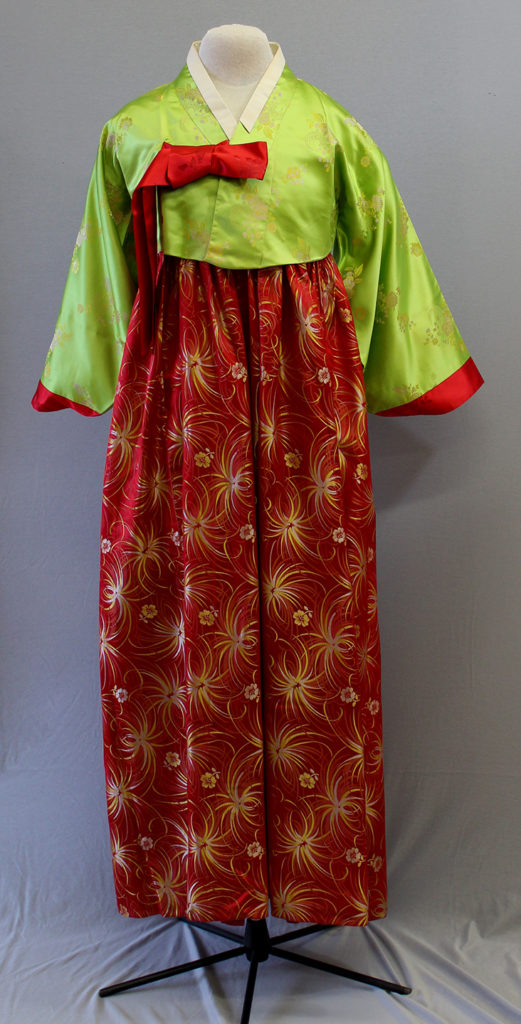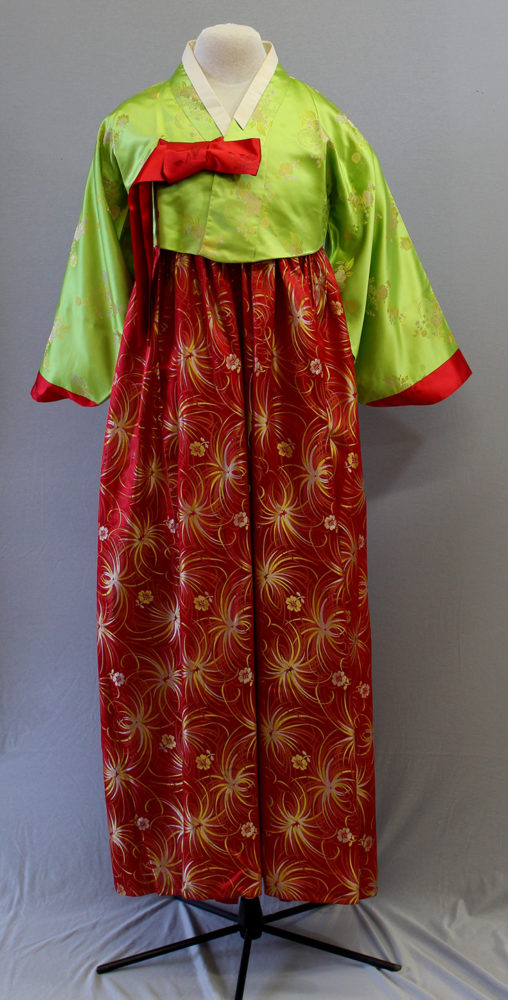Cultural understanding through clothing

The Korean Hanbok donated by Marcia Ubbelohde.
Annyeonghaseyo (Hello in Korean), NDSU students! I’m back for another, and final semester writing the Piece of the Week. For first time readers, this weekly section focuses on the historical costumes available at the Emily Reynolds Historic Costume Collection here on our beautiful NDSU campus. The collection is located on the fourth floor of the Family Life Center, the building connected to the Memorial Union, room 414. Items belonging in the collection are; related to the history of North Dakota and its surrounding regions or the item must be related to international or cultural dress and obviously, related to fashion.
Last semester, I wrote articles based on items I thought provided unique historical context of the state of North Dakota and/or fashion history. This semester, I will be focusing on the international and cultural dress we have available in the collection.
The first piece I will be writing about is a Korean Hanbok donated by Marcia Ubbelohde. The Hanbok consists of two pieces, the upper piece is the jeogori and the skirt is called the chima. The jeogori on this Hanbok consists of delicate lime green silk brocade and contrasting red brocade cuffs. The chima consist of opposing, yet complementary colors of red, yellow, and white floral silk brocade.
-Ellimay Rodriguez Mujica
“Similar to other countries, the color of the Hanbok was used as a representation of social class, marital status, and age.”
The Hanbok was introduced in Korea during the Three Kingdoms period (37 BCE- 668 CE). It was commonly worn in Korea up until the late twentieth century, due to the introduction and incorporation of Western styles into day-to-day life. The Hanbok continues to be used in Korean festivities and ceremonies.
Similar to other countries, the color of the Hanbok was used as a representation of social class, marital status and age. Among younger female wearers, brighter colors are worn whereas middle-aged women would wear more natural tones. Unmarried women wore yellow jeogori and red chima; while married women wore green jeogori and red chima.
The Hanbok in the Emily Reynolds Collection was donated by Marcia in 2014, which was originally gifted to her in the 1960s by her friend, Myung Hi Kim.
Since the Hanbok in Korea had slowly been moving to private festivities rather than public life, it’s interesting to wonder if the gifted Hanbok represented a married woman, a longstanding tradition, or was it simply a color preference?
As mentioned, I will focus on costumes representing different cultures. Countries the pieces originate from that will be written about this semester are from; Korea, China, Thailand, India, Mexico, Nigeria and Kazakhstan. In closing, my goal this semester is to enlighten the student body about different clothing styles and what it means. If that be in a historical, social and/or cultural context.
If for any reason the information that I wrote is no longer accurate or doesn’t highlight key features of the outfit and the culture, feel free to email me and a correction will be made. My goal is to portray cultures with the utmost respect.
